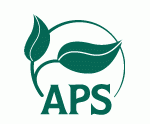-
WHAT Wednesday Videos
Category Archives: DISEASE
Actinopelte Leaf spot
The following is a blog post writing assignment from 2013 summer BURS (Bioenvironmental Undergraduate Research Scholar) and BESC 484 student, A. Brake. As previously mentioned, the student is asked to submit a short write up of something that interest them (related to plant pathology) which they may have seen or heard about in the Plant Clinic. They are also highly encouraged to take photographs of subject (training in photo documentation). Ms. Brake submitted a couple of excellent photo with her assignment below where she used a Dino-lite digital… Read More →
Training opportunity for Master Gardeners volunteers – a call to action
One of the most robust programs for volunteers is the Master Gardener program in Texas (Texas A&M Agrilife Extension). This is where folks who are interested in gardening register to take classes from various experts in plants, plant health management and horticulture. (Check out their website at http://txmg.org ). To help with some of the continuing education efforts for these valuable volunteers, there is the Master Gardener Specialist program which provides a little more “bulk” information and training to these volunteers in various areas of gardening such as vegetable growing and… Read More →
Leaf Gall Diagnostics
Ever wonder about how some diseases are diagnosed in a plant disease diagnostic lab. You would be surprised that there are similarities to an ER in the hospital. When a sample arrives at the Plant Clinic, it has to be accompanied with a submission form where there are a bunch of question trying to get some history leading to the incidence or current situation. Then the samples are triaged within 24-48 hours of receipt (dependent on diagnostician availability). Decisions are made how to proceed based on history information… Read More →
Perfect conditions for Cercospora
Be on the lookout for Cercospora leaf spot in your landscape plants! Recent weather conditions around the state like cool temperatures and high humidity seem to trigger an increase in Cercospora activity. Check your colorful fall annual bedding plants, including zinnias, hydrangeas, snapdragons and azaleas, for necrotic or purplish, angular leaf spots. A: Cercospora symptoms on a recent Pansy sample B: Conidiophores on leaf edge C: Cluster of Cercospora conidiophores
White rust on crucifers
Last week we received some turnip leaves into the lab with white patches on the undersides. After examining the leaves more closely under the dissecting and compound microscopes, we saw that the white patches were actually “rust” pustules containing sporangia. The pathogen, Albugo candida, which causes this disease, white rust, is actually not a true rust as it is not a member of the kingdom Fungi. However, the organism does imitate the true rusts in the manifestation of its reproductive structures as well as in the fact that… Read More →


